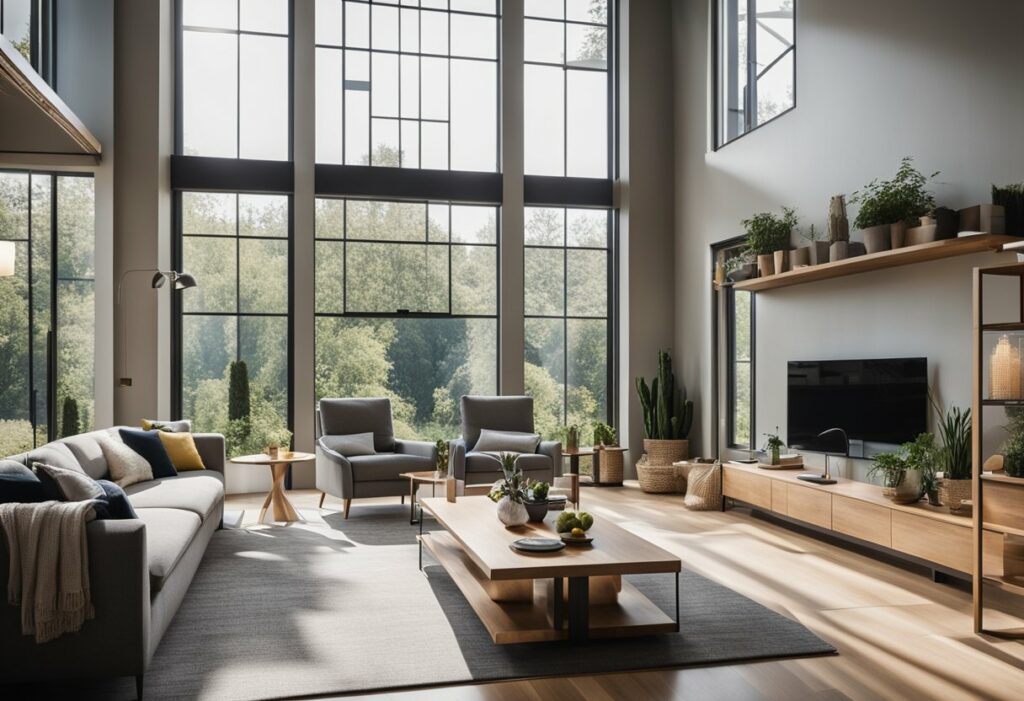Living and Dining Room Interior Design: Tips and Inspiration
When it comes to interior design, the living and dining room are often the spaces that see the most use. These rooms are where you entertain guests, relax with family, and create memories that will last a lifetime. As such, it’s important to design these spaces in a way that is both functional and aesthetically pleasing.
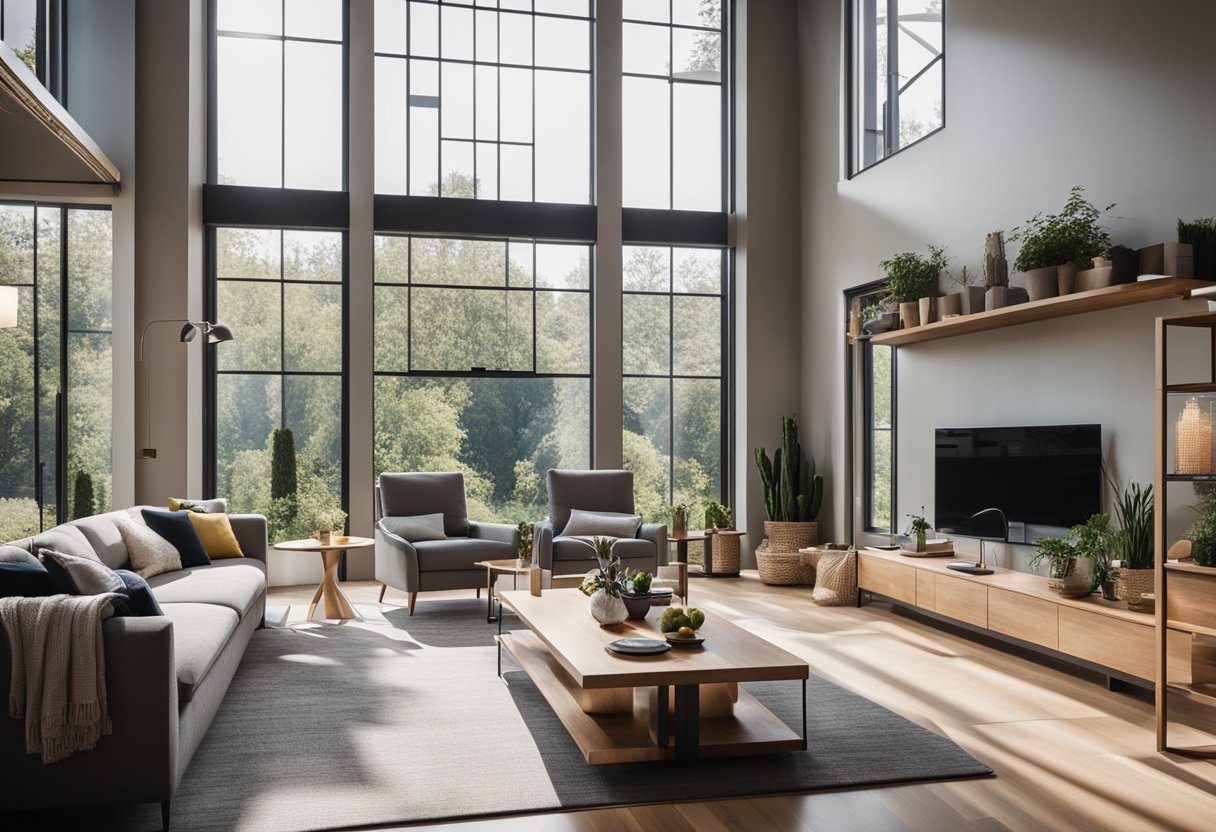
Designing a Harmonious Living and Dining Space One of the most important aspects of living and dining room interior design is creating a harmonious space that flows seamlessly from one area to the next. This can be achieved by using similar colours, textures, and materials throughout the space. For example, you might choose a neutral colour palette and incorporate natural materials like wood and stone to create a cohesive look.
Accessorising and Personalising Your Space Once you have the basics of your living and dining room design in place, it’s time to add your own personal touches. This might include artwork, family photos, or decorative items that reflect your personality and style. Adding plants and greenery can also help to bring life and colour to your space.
Key Takeaways
- Designing a harmonious living and dining space involves using similar colours, textures, and materials throughout the space.
- Personalising your space with artwork, family photos, and decorative items can help to make it feel like home.
- Adding plants and greenery can bring life and colour to your living and dining room.
Designing a Harmonious Living and Dining Space
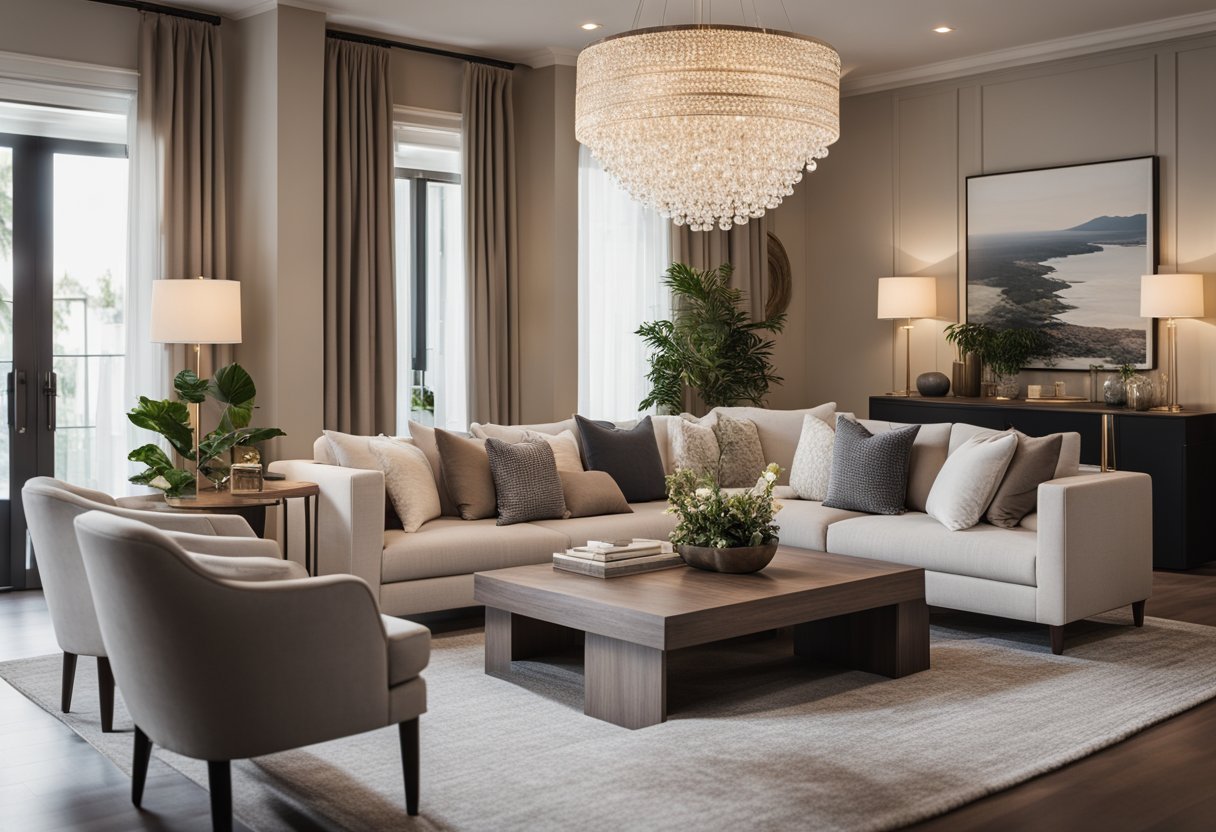
Designing a living and dining space that is functional, cohesive, and stylish can be a challenge. However, with the right approach, you can create a space that maximises flow and functionality, while also reflecting your personal style. Here are some tips to help you create a harmonious living and dining space.
Maximising Flow and Functionality
When designing your living and dining space, it’s important to consider the layout and flow of the room. Open-plan spaces are popular in modern living room design, as they create a sense of spaciousness and allow for natural light to flow through the space. However, it’s important to ensure that the space is still functional and practical. Consider using a sectional sofa to define the living area and a dining table to define the dining area. This will create a clear delineation between the two spaces, while also maximising flow and functionality.
Choosing the Right Furniture
Choosing the right furniture is essential when designing a harmonious living and dining space. Opt for furniture with clean lines and a neutral colour palette to create a streamlined and cohesive look. Consider incorporating an entertainment unit and a recliner into the living space to create a focal point and provide a comfortable space for relaxation. When choosing a dining table, consider the size and shape of the room, as well as your personal style. A round table can create a more intimate and cosy dining experience, while a rectangular table can accommodate more people and is ideal for larger gatherings.
Lighting: Setting the Mood and Style
Lighting is an important aspect of interior design, as it can set the mood and style of the space. Consider incorporating different types of lighting, such as overhead lighting, table lamps, and floor lamps, to create a layered and dynamic lighting scheme. Use dimmer switches to control the level of lighting and create a warm and inviting atmosphere. Consider using pendant lights above the dining table to create a focal point and add a touch of style to the space.
Colour Schemes and Textures
Colour schemes and textures are important elements of interior design, as they can create a sense of cohesion and style in the space. When choosing a colour palette, consider using a neutral base and adding pops of colour through accessories and soft furnishings. Use rugs to define the living and dining areas and add texture to the space. Consider incorporating natural materials, such as wood and stone, to add warmth and character to the space.
By following these tips, you can create a harmonious living and dining space that is functional, cohesive, and stylish. Consider working with an interior designer to help you achieve your vision and create a space that reflects your personal style and needs.
Accessorising and Personalising Your Space
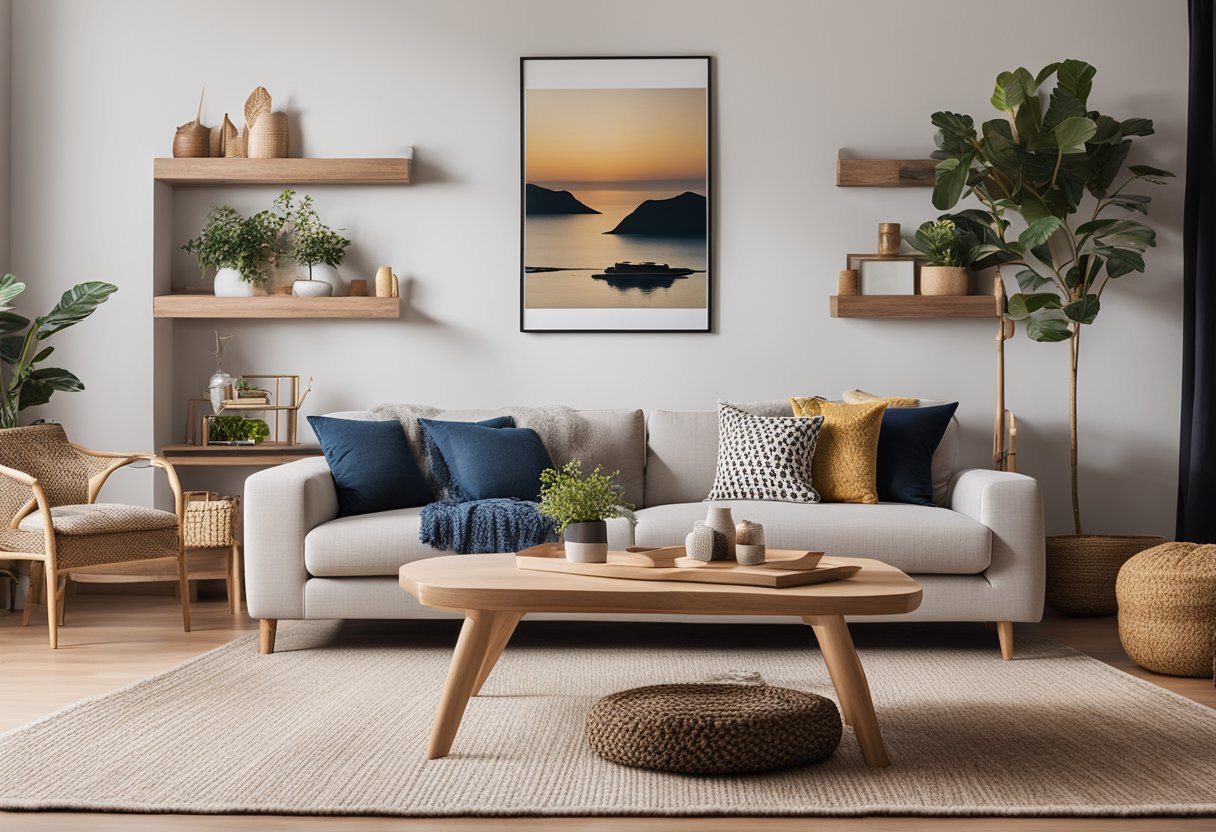
When it comes to living and dining room interior design, accessorising and personalising your space is key to making it feel like home. Here are some tips for adding your own unique touch to your space:
Art and Decor: Expressing Your Style
Art and decor are great ways to express your personal style and add visual interest to your living and dining room. Consider hanging a statement piece of art on the wall or creating a gallery wall with a collection of your favourite pieces. You can also add decorative objects like vases, sculptures, and figurines to your shelves and tables to add texture and dimension to your space.
Innovative Solutions for Small Spaces
If you have a small living and dining room, it’s important to get creative with your design choices. Consider using multifunctional furniture like a coffee table with built-in storage or a sofa bed to maximise your space. You can also use mirrors to create the illusion of more space and add pendant lights or a chandelier to draw the eye upwards and create a sense of height.
Creating a Cosy Atmosphere
To create a cosy atmosphere in your living and dining room, consider adding an area rug to define the seating area and add warmth to your space. You can also use throw pillows and blankets to add texture and comfort to your seating. Don’t be afraid to play with patterns and colours to create a sense of visual interest and balance in your space.
Remember, when accessorising and personalising your living and dining room, it’s important to find a balance between simplicity and visual interest. Use negative space to your advantage and consider adding an accent wall or wallpaper to add depth and dimension to your space. And if you’re not sure where to start, don’t be afraid to consult with design experts for functional interior designs and expert advice on zoning and balance in open floor plans.
Frequently Asked Questions
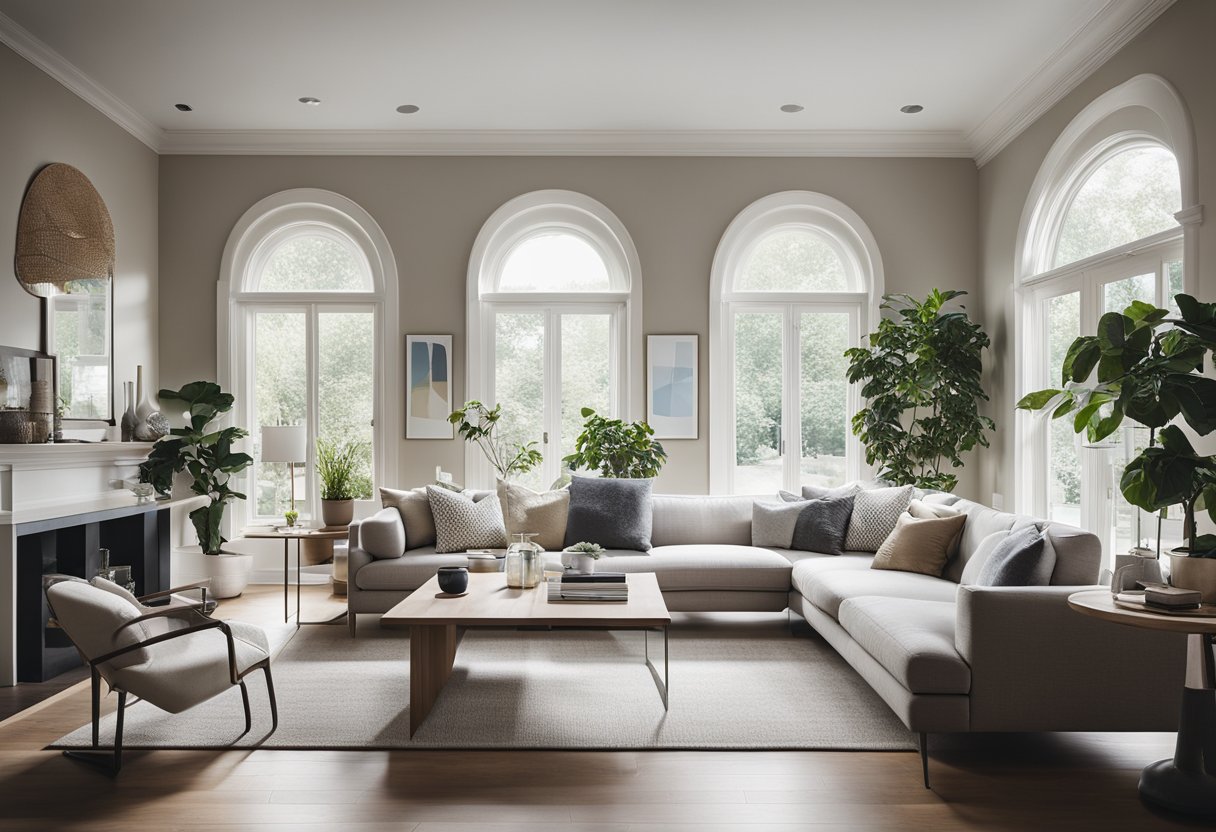
How can I effectively merge my living room and dining area in a small flat?
If you have a small flat, merging your living room and dining area can be a great way to maximise space. To effectively merge the two areas, consider using furniture that can serve multiple purposes, such as a dining table that can also be used as a desk or a coffee table that can be raised to dining table height. You can also use rugs and lighting to define the different zones in the room and create a cohesive look.
What are the top contemporary design trends for living and dining room spaces?
Contemporary design trends for living and dining room spaces include using bold colours, mixing textures and patterns, and incorporating natural elements such as wood and plants. Other popular trends include using statement lighting fixtures, incorporating vintage and antique pieces, and using metallic accents.
How do I create a seamless flow between my living and dining areas?
To create a seamless flow between your living and dining areas, consider using the same colour scheme and design elements in both spaces. You can also use lighting and furniture placement to create a natural flow between the two areas. For example, placing a sofa facing the dining area can create a sense of continuity between the two spaces.
What are some clever ways to define the living and dining zones in an open-plan layout?
In an open-plan layout, it’s important to define the living and dining zones to create a sense of separation between the two areas. One way to do this is by using different flooring materials or rugs to define the different zones. You can also use furniture placement and lighting to create a visual separation between the two areas.
How can I maximise space in my combined living and dining room without sacrificing style?
To maximise space in your combined living and dining room without sacrificing style, consider using multi-functional furniture, such as a dining table that can double as a workspace or a storage ottoman that can also be used as extra seating. You can also use built-in storage solutions to maximise space and keep clutter at bay.
What are the best colour schemes to enhance the look of a joint living and dining room?
The best colour schemes for a joint living and dining room depend on your personal style and preferences. However, some popular colour schemes include using neutral colours such as beige, grey, and white, as well as bold colours such as navy blue and emerald green. You can also use accent colours to add visual interest and create a cohesive look between the two areas.

